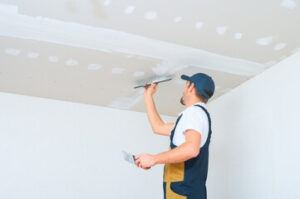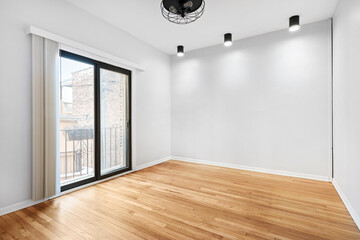There are many different types of roof structures. Listed below are three typical types of roof structures and their uses: rafters, purlins, and rafter trusses. These materials are inexpensive, easy to procure, and durable. Learn about each type and how it works before starting a roofing project. If you have any questions, please get in touch with your local roofing company.

Typical Roof Structure
There are many different kinds and parts of a roof. However, a typical roof structure will have the following components: frame, rafters, and eaves. A frame is composed of a series of parallel beams and usually overhangs the exterior wall of the building. Rafters are the supporting beams, while eaves consist of fascia, soffits, and drip edges. The roof’s overall structure will also have specific characteristics, such as pitch, type of material used, and more.
In the past, roof structures of this type were difficult to assemble because abutting sheets of insulating material had to be exposed to the interior of the building. Often, gaps would form in these seams, allowing air inside the building to contact the hard roofing material. This problem is avoided by using structurally-sound, rigid shingles. And today, roof structures can be constructed using a wide range of materials without sacrificing aesthetics.
In general, roofs are made up of rafters and purlins. Insulation material is placed over these purlins in long sheets. Workmen then attach hard roofing materials over the insulation material. To complete the job, they must pass across the width of the building and carry various tools and equipment. Then, the process repeats itself for the other side. If the roof is not yet complete, the process is repeated until the entire structure is finished.
A classic collar beam structure is used most often in utility attics, where the length of the structure is not more than 3.5 m. To provide adequate height, brick elbow walls can be used to support the rafters. A purlin-collar beam truss consists of a series of posts connected with an intermediate purlin. This structure is also applicable to larger spans. Once complete, the structure is solid and easy to maintain.
Types Of The Roof Structure
Different types of the roof structure are used for different purposes. Single-ply, double-ply, and metal-clad roofs are common examples. These types of roofs generally have three points for each rafter. There are several common benefits associated with each type. These types are suitable for low-rise buildings but are less desirable for taller houses. Listed below are the differences between different types of roofs. Read on to discover which type is right for your home.
Pyramid-shaped roofs are similar to pyramids. In a pyramid-shaped roof, four ridges connect at the top. These roofs are more practical and wind-resistant than pyramids. Cross-gabled roofs are like pyramids, but their shape varies slightly. These roofs are typically small houses or garages. You can choose a style that is right for your home or your building’s needs.
Besides being a common roofing material, a couple of roofs have several distinct types. A couple of roofs, for example, have two types of rafters. The ridge piece supports the main rafters. The rafters are attached to wall plates. A couple of roofs is a good choice for places where a span of at least 3.7 meters is necessary. It’s also a good option for residential buildings. It’s sturdy enough to carry a heavy load, yet remains lightweight and flexible.
Single-pitch roofs have a more pronounced character than double-pitch roofs and are usually made up of single-sloping surfaces. A mono-pitch roof usually looks like an equilateral triangle with one end connecting to a central ridge. Single-pitch roofs are also sometimes called lean-to roofs, shed roofs, or flat roofs. Different types of roofs are also built with varying levels of pitch.
Purlins
A purlin is a horizontal beam or bar that supports a roof structure. It is usually supported by the walls of the building and the rafters. It is sometimes used as a substitute for the closely-packed rafters of a wooden structure. Purlins are commonly used in metal building structures, but they can also be found in some timber-frame buildings. This article will explore the purpose of purlins and some of their common types and sizes of them.
Purlins are used to support the roof structure and pass loads to the major structural elements. Their design is dependent upon how much weight is carried by the roof, and how long the sheeting can be. Considering the weight of the structure, purlins are an important part of the overall roof structure. It is therefore vital to select the correct type and quality for your project. In addition, consider the local building codes to ensure that your roof structure meets the standards set by the local authority.
A good rule of thumb for choosing a purlin is to use a minimum of 15% of the span of the truss. If your purlins are unequal in length, make sure to add 7.5% of the span of the adjacent purlins to them. Less than 15% of the purlins’ spans will not provide structural continuity, and smaller lap lengths may result in local failure.
The advantages of a purlin roof are that it minimizes the size of the rafters and makes it easier to construct the structure envelope. The design of the purlins is project-specific, but with the use of software, a roof can be optimized. It can even be adapted to fit the needs of the building. A purlin roof is an excellent choice for both residential and commercial structures.
Rafter Truss
Compared to rafters, a truss roof structure can span up to 60 feet, and requires much less construction time than a traditional rafter roof structure. These roof trusses are generally manufactured offsite and transported to the job site in bulk. While they are less expensive than rafters, their installation requires multiple people and the use of a forklift. Regardless of the choice, trusses offer a variety of benefits over a rafter roof.
A typical home roof structure includes multiple trusses spaced evenly throughout the roof. The rafter construction is usually stick-built, with each truss being installed on site. Most trusses, however, are made in a factory and shipped to the work site. This allows the homeowner to save on the cost of labor by avoiding a trip to the construction site.
The drawback of trusses is their limited flexibility. Trusses are not adjustable and cannot be easily modified. They can be altered a bit, but this can cause additional expenses and delays. The rafter is the better choice for remote projects and requires fewer construction workers. It takes more time to complete but can support more weight than a truss. The only real disadvantage to trusses is that you can’t carry heavy objects with a rafter.
While a truss can be installed on any structure, rafters aren’t necessary. They are often used on large buildings and small home additions. In addition, roof trusses are much cheaper than rafters due to their efficiency. As a result, they can be built faster without the use of costly wood. This allows for more flexibility and freedom when choosing the layout of the interior of the home.
Engineered Roof Truss
An engineered roof truss is a highly efficient way to build a roof. Unlike traditional stick framing, which requires measuring and cutting dimensional lumber, engineered trusses are prefabricated. These prefabricated trusses can span more distances, eliminating the squeaks and other problems associated with stick framing. Engineered trusses are a great choice for do-it-yourselfers and are chosen by over 80% of builders these days.
The structural benefits of engineered roof trusses are many, but the most obvious benefit is the ability to withstand hurricanes and other strong winds. Hurricanes have devastated Florida in recent years, and building codes have been strengthened to help prevent future damage. The tight bond between the sail-like roof deck and the walls is essential to preventing damage from storms. Thankfully, engineers have come up with a way to create an engineered roof truss system that will resist the damage caused by hurricanes and other natural disasters.
Another benefit is cost. Compared to conventional framing, engineered roof trusses are much less expensive. They are constructed from shorter lengths of lumber and can span much greater distances than conventional framing. Furthermore, they don’t require interior walls to be load-bearing. Ultimately, roof trusses offer the greatest advantage for the construction industry. The best part? They’re easy to install.
There are three different types of trusses. The most common type is a common truss, which comes with varying web configurations. This type features a vertical center post and three posts along the bottom chord. Its name, king post truss, is a more complex version, with two fans on opposite ends of the bottom chord. A kingbolt truss, on the other hand, features a metal rod and is the most expensive of all.



